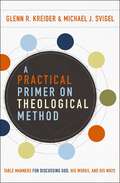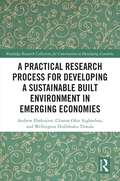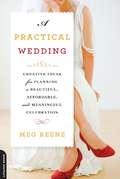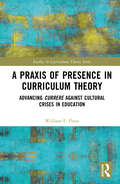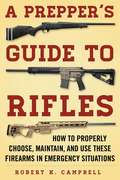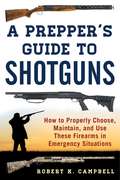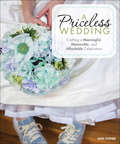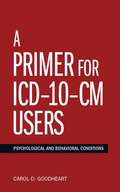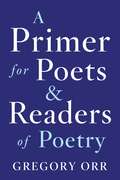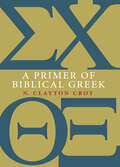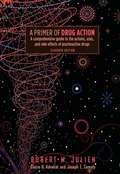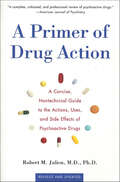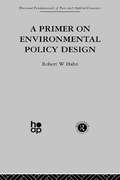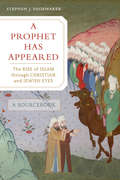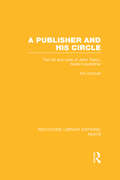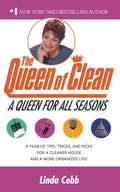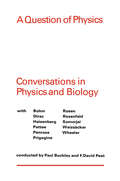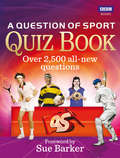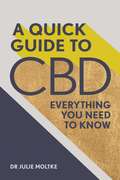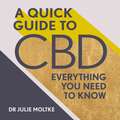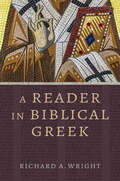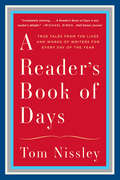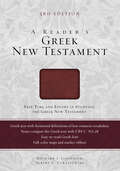- Table View
- List View
A Practical Primer on Theological Method: Table Manners for Discussing God, His Works, and His Ways
by Glenn R. Kreider Michael J. SvigelA "how-to" manual for doing theology, and a handbook of etiquette for doctrinal discussions with other believers.Around a table sit men and women with distinct roles: The Interpreter, the Theologian, the Virtuous, the Philosopher, the Scientist, the Artist, the Minister, and the Historian. Each is ready to engage in a passionate discussion centered on God, his works, and his ways. Regardless of which role you play at the same table, you're invited. You simply need to pull up a chair and join the conversation. But how? What do you say when you take your seat? Where do you start? What are the "rules" of the dialogue?A Practical Primer on Theological Method will help you answer these questions. This primer is not only a "how-to" manual for doing theology, but a handbook of etiquette for doctrinal discussions with other believers. This popular-level introductory text presents the proper manner, mode, and means of engaging fruitfully in theology.
A Practical Research Process for Developing a Sustainable Built Environment in Emerging Economies (Routledge Research Collections for Construction in Developing Countries)
by Andrew Ebekozien Clinton Ohis Aigbavboa Wellington Didibhuku ThwalaA Practical Research Process for Developing a Sustainable Built Environment in Emerging Economies aims to fill the dearth of practical research guidance and reference material with specific focus on the built environment in developing countries. Global policy agendas such as Agenda 2030 (the SDGs) highlight the importance and growth of research and knowledge from emerging nations who are increasingly contributing to research that is critical for development and advancement. The role of built environment practitioners will continue to evolve by building on the sound foundations laid down by the professions and by exploiting to the full the new technologies available to us through conducting innovative research, but more guidance on the research process is necessary to ensure the integrity and quality of the output.This book has been structured so that each chapter is largely free-standing, allowing the reader (undergraduate, postgraduate, or practitioner) to reference the material with ease. It aims to provide practical guidance on conducting research and on writing a dissertation or report and begins by considering the general research background in a built environment context. It then covers research ethics, before moving on to discuss the importance of selecting the right research topic and title and writing a clear abstract. The chapters then cover introducing a research project, and the authors include a section on the problem statement, research questions, aims and objectives, research gap(s), and motivations for the study. The book goes on to cover the literature review section, theoretical and conceptual frameworks, the various types of methodological approaches, and when to apply them. The findings section, discussion of the results, and the study’s implications are then discussed, before the final chapters cover the conclusion and recommendations.The book provides a useful reference for higher education students, graduates, postgraduates, and practitioners engaged in all aspects of construction and built environment research.
A Practical Wedding
by Meg KeeneAn Insanity-Free Wedding: It Can Happen!Getting engaged is exhilarating...until it sets in that a wedding costs three times what you thought, and takes five to ten times the effort it reasonably should. And then there are the expectations: from calligraphy invitations to satin chair-covers, all those things that Must Be Done or everyone will be Horribly Offended. Or will they?A Practical Wedding helps you create the wedding you want--without going broke or crazy in the process. After all, what really matters on your wedding day, what you'll remember 'til you're old and gray, is not so much how it looked as how it felt. In this refreshing guide, expert Meg Keene shares her secrets to planning a beautiful celebration that reflects your taste and your relationship. You'll discover: The real purpose of engagement (hint: it's not just about the planning) How to pinpoint what matters most to you and your partner DIY-ing your wedding: brilliant or crazy? Affording a wedding without having to cut your guest list How to communicate decisions with your family Why that color-coded spreadsheet is actually worth it Wedding Zen can be yours. Meg walks you through everything from choosing a venue to writing vows, complete with stories and advice from women who have been in the trenches, the Team Practical brides. So here's to the joyful wedding, the sensible wedding, the unbelievably fun wedding! A Practical Wedding is your complete guide to getting married with grace.
A Practical Wedding: Creative Ideas for a Beautiful, Affordable, and Stress-free Celebration
by Meg KeeneA companion to the popular website APracticalWedding.com and A Practical Wedding Planner, A Practical Wedding helps you sort through the basics to create the wedding you want -- without going broke or crazy in the process. After all, what really matters on your wedding day is not so much how it looked as how it felt. In this refreshing guide, expert Meg Keene shares her secrets to planning a beautiful celebration that reflects your taste and your relationship. You'll discover: The real purpose of engagement (hint: it's not just about the planning) How to pinpoint what matters most to you and your partner DIY-ing your wedding: brilliant or crazy? How to communicate decisions to your familyWhy that color-coded spreadsheet is actually worth itWedding Zen can be yours. Meg walks you through everything from choosing a venue to writing vows, complete with stories and advice from women who have been in the trenches: the Team Practical brides. So here's to the joyful wedding, the sensible wedding, the unbelievably fun wedding! A Practical Wedding is your complete guide to getting married with grace.
A Praxis of Presence in Curriculum Theory: Advancing Currere against Cultural Crises in Education (Studies in Curriculum Theory Series)
by William F. PinarBuilding on his seminal methodological contribution to the field – currere – here William F. Pinar posits a praxis of presence as a unique form of individual engagement against current cultural crises in education. Bringing together a series of updated essays, articles, and new writings to form this comprehensive volume, Pinar first demonstrates how a praxis of presence furthers the study of curriculum as lived experience to overcome self-enclosure, restart lived and historical time, and understand technology through a process of regression, progression, analysis, and synthesis. Pinar then further illustrates how this practice can inform curricular responses to countering presentism, narcissism, and techno-utopianism in educators’ work with "digital natives." Ultimately, this book offers researchers, scholars, and teacher educators in the fields of curriculum theory, the sociology of education, and educational policy more broadly the analytical and methodological tools by which to advance their understanding of currere, and in doing so, allows them to tackle the main cultural issues that educators face today.
A Prepper's Guide to Rifles: How to Properly Choose, Maintain, and Use These Firearms in Emergency Situations
by Robert K CampbellKnow which rifles can defend you and your family.In the chaos of a survival situation, firearms will be important tools for protecting yourself, your family, and your supplies as well as for hunting animals for food. In A Prepper’s Guide to Rifles, Robert K. Campbell discusses the best rifles to have with you in any confrontation-including the end of the world as we know it. Rifles that are easy to carry and lightweight and that shoot accurately and reliably at close ranges are ideal candidates for personal protection. He covers the fairly standard AR family but also pistol calibers, .22s, and more nontraditional choices.In A Prepper’s Guide to Rifles, Campbell explores specific rifles that are appropriate for urban, rural, and suburban environments, with tips on how to use them in each context. Whether at home or in a survival scenario, these rifles are the best for defense.A Prepper’s Guide to Rifles not only reviews the specific features of defensive rifles but how to use them-whether on the move, in a defensive situation, while retreating, or in other circumstances. Campbell also offers expert tips on how to improve your marksmanship, how to maintain your firearms, crucial gun safety rules, what ammo and optics to purchase, and more.
A Prepper's Guide to Shotguns: How to Properly Choose, Maintain, and Use These Firearms in Emergency Situations
by Robert K. CampbellIn the chaos of a survival situation, firearms will be important tools for protecting yourself, your family, and your supplies as well as for hunting animals for food. In A Prepper’s Guide to Shotguns, Robert K. Campbell discusses the best shotguns to have with you in any confrontation—including the end of the world as we know it. Shotguns that are easy to carry and lightweight and that shoot accurately and reliably at close ranges are ideal candidates for personal protection. In A Prepper’s Guide to Shotguns, Campbell explores specific shotguns that are appropriate for urban, rural, and suburban environments, with tips on how to use them in each context. Whether at home or in a survival scenario, these shotguns are the best for defense. A Prepper’s Guide to Shotguns not only reviews the specific features of defensive shotguns but how to use them—whether on the move, in a defensive situation, while retreating, or in other circumstances. Campbell also offers expert tips on how to improve your marksmanship, how to maintain your firearms, crucial gun safety rules, what ammo and optics to purchase, and more.
A Priceless Wedding: Crafting a Meaningful, Memorable, and Affordable Celebration
by Sara CotnerPlan a wedding that reflects your commitment—to each other and to the things you truly value.How you and your partner plan your wedding can set a precedent for how you will be as a family. How do you work together to merge two different sets of ideas into something bigger and better? How do you disagree in constructive rather than destructive ways? How do you honor the input and experience of family members while simultaneously maintaining ownership of your lives and choices? In this part-memoir, part how-to handbook, popular wedding blogger Sara Cotner shares how you can resist the pressure to create the wedding of someone else's dreams and instead reclaim the real purposes of a wedding: community, connection, commitment, and fun. A Priceless Wedding covers all the basics: securing a location, finding a dress, deciding on flowers, selecting a wedding party, planning the ceremony, choosing rings, and everything in between—but it goes beyond the elements of a "traditional" wedding to help you plan an eco-friendly, hand-crafted, budget-minded celebration that will be both memorable and meaningful. Featuring do-it-yourself projects that help you create your own unique wedding favors, sew a homemade wedding quilt, and more, this book will inspire you to begin your own traditions and rituals that will clarify your values and let you live them out loud.
A Primer For ICD-10-CM Users: Psychological and Behavioral Conditions
by Carol D. GoodheartThis primer aims to give psychologists and other mental health professionals the information necessary to use the World Health Organization's 10th edition of the International Classification of Diseases and paves way for successful adoption of ICD-11.
A Primer for Poets and Readers of Poetry
by Gregory OrrAn innovative and accessible guide to poetry-writing by an award-winning poet and beloved professor of poetry. A Primer for Poets and Readers of Poetry guides the young poet toward a deeper understanding of how poetry can function in his or her life, while also introducing the art in an exciting new way. Using such poems as Theodore Roethke’s "My Papa’s Waltz" and Robert Hayden’s "Those Winter Sundays," the Primer encourages young writers to approach their "thresholds"—those places where disorder meets order, where shaping imagination can turn language into urgent and persuasive poems. It provides the poet with more than a dozen focused writing exercises and explains essential topics such as the personal and cultural threshold; the four forces that animate poetic language (naming, singing, saying, imagining); tactics of revision; ecstasy and engagement as motives for poetry; and how to locate and learn from our personal poetic forebears.
A Primer of Biblical Greek (Eerdmans Language Resources (ELR))
by N. Clayton CroyThough there are currently a number of texts for teaching biblical Greek, most of them are plagued by various deficiencies. Written with these flaws in mind, this new primer by N. Clayton Croy offers an effective, single-volume introduction to biblical Greek that has proven successful in classrooms around the country.This volume takes a primarily deductive approach to teaching biblical Greek and assumes that students have no prior knowledge of the language. Divided into 32 separate lessons, each containing a generous number of exercises, the text leads students from the Greek alphabet to a working understanding of the language of the Septuagint and the New Testament.Special features of A Primer of Biblical Greek:An abundance of exercisesEach lesson includes practice sentences taken from the Septuagint and the New Testament as well as Greek sentences composed by the author. Exercises in English-to-Greek translation are also included.Concise but accurate grammatical explanationsGreat care has been taken to insure that grammatical explanations are clear, correct, and succinct. In particular, the Greek participle receives a fuller-than-usual treatment.A natural order of presentationMaterial is presented according to the natural structure of Greek and the traditional terminology of grammarians. Declensions and principal parts, for example, are presented in numerical order.Inclusive languageThe book uses inclusive language for human beings throughout.Helpful appendixes for quick referenceIncluded at the back of the book are the Greek paradigms, Greek-to-English vocabulary, English-to-Greek vocabulary, and a bibliography for further study.
A Primer of Drug Action: A Comprehensive Guide to the Actions, Uses, and Side Effects of Psychoactive Drugs (11th edition)
by Robert M. JulienA definitive guide to the pharmacology of drugs that affect the mind and behavior with over 40% new research citations. A clearer and current presentation on the mechanisms of drug action, etiologies of major psychological disorders, rationales for drug treatment, and the uses of psychopharmacology in patient care.
A Primer of Drug Action: A Concise Nontechnical Guide to the Actions, Uses, and Side Effects of Psychoactive Drugs
by Robert M. JulienSince 1975, Robert Julien's A Primer of Drug Action has been the definitive guide to the effects of psychoactive drugs on the brain and on behavior. Now fully updated, this popular guide continues to lead the way through a rapidly changing field, providing readers with a clear, contemporary, and objective look at every drug and medication that either positively or adversely affects brain function. This edition includes important new information on:-Herbal medications-Drug therapy for behavioral and anxiety disorders-Clinical practice guidelines for treating psychological disorders-Depression and the action of antidepressant drugs-The use of newer anticonvulsants in the treatment of bipolar disorder, pain syndromes, and behavioral disorders-Drug therapy for children, adolescents and the elderly-"New generation" antipsychotic agentsAuthoritative, comprehensive, and suitable for those with little background in biology, A Primer of Drug Action is an indispensable source of information for anyone interested in drug use, abuse, and education.
A Primer on Environmental Policy Design
by R. HahnDiscusses how the needs of the individual must be balanced with socially desirable ecological goals if the environment is to be protected.
A Prophet Has Appeared: The Rise of Islam through Christian and Jewish Eyes, A Sourcebook
by Stephen J. ShoemakerEarly Islam has emerged as a lively site of historical investigation, and scholars have challenged the traditional accounts of Islamic origins by drawing attention to the wealth of non-Islamic sources that describe the rise of Islam. A Prophet Has Appeared brings this approach to the classroom. This collection provides students and scholars with carefully selected, introduced, and annotated materials from non-Islamic sources dating to the early years of Islam. These can be read alone or alongside the Qur'an and later Islamic materials. Applying historical-critical analysis, the volume moves these invaluable sources to more equal footing with later Islamic narratives about Muhammad and the formation of his new religious movement.Included are new English translations of sources by twenty authors, originally written in not only Greek and Latin but also Syriac, Georgian, Armenian, Hebrew, and Arabic and spanning a geographic range from England to Egypt and Iran. Ideal for the classroom and personal library, this sourcebook provides readers with the tools to meaningfully approach a new, burgeoning area of Islamic studies.
A Publisher and his Circle: The Life and Work of John Taylor, Keats' Publisher (Routledge Library Editions: Keats)
by Tim ChilcottIn the early nineteenth century, the publishing house of Taylor & Hessey brought out the work of Keats, Clare, Hazlitt, De Quincey, Carlyle, Lamb, Coleridge and many more of the most important literary figures of the time, as well as the great literary journal of the period, the London Magazine. Tim Chilcott here examines the life and work of John Taylor, the firm’s founder. The account, originally published in 1972 and incorporating a large amount of hitherto unpublished material, is a fascinating piece of literary, social and publishing history, showing clearly the relationship between the author and his publisher, and in turn between the publisher and the reading public.
A Queen for All Seasons: A Year of Tips, Tricks, and Picks for a Cleaner House and a More Organized Life!
by Linda CobbThe Queen of Clean with her royal tips for every season, an untidy home would almost be treason! Winter Make snow shoveling a breeze...store holiday decorations with no tangles...humidify dry indoor air...care for flannel sheets...make those Valentine's gems sparkle Spring Garden the natural way...allergy-proof your home...banish grass stains...color your Easter eggs Summer Prepare for family road trips...care for your camping equipment...keep bugs away without chemicals...clean your sports gear Fall Get organized for back to school...store your summer clothes properly...put away your air conditioner...prepare for stress-free holidays!
A Question of Physics: Conversations in Physics and Biology
by F. David Peat Paul BuckleyThis book contains interviews with physicists, biologists, and chemists who have been involved in some of the most exciting discoveries in modern scientific thought. The conversations--with Bohm, Pattee, Penrose, Rosen, Rosenfeld, Somorjai, Weizsäcker, Wheeler, and Nobel prizewinners Heisenberg, Dirac, and Prigogine--explore issues which have shaped modern physics and those which hint at what may form the next scientific revolution.The discussions range over a set of basic problems in physical theory and their possible solutions--the understanding of space and time, quantum and relativity theories and recent attempts to unite them--and deal with related questions in theoretical biology. The approach is non-technical, with an emphasis on the assumptions of modern science and their implications for understanding the world we live in.The book, which originated in a highly successful radio series, provides a vivid first-hand account of some of the astounding and perplexing developments in modern science, a rare overview that will intrigue the informed non-scientist and the scientist alike.
A Question of Sport Quiz Book
by David Gymer and David BallAfter more than four decades on the air, A Question of Sport is firmly established as the final word in sports trivia. Now, after countless arguments, sporting debates and lost hours spent directing the action from the sofa, you can finally test your own knowledge to see if you can succeed where so many sporting greats have failed.With over 3,500 brand new questions, A Question of Sport Quiz Book will challenge you to put your money where your mouth is and put your knowledge of the sports world to the ultimate test. Play on your own or in teams to answer questions covering all eras of football, golf, cricket, motor racing, boxing, rugby, darts, snooker, the Olympics and so much more.With questions from your favourite rounds from A Question of Sport, here at last is your chance to take on the captain's challenge, or go head-to-head on the quick-fire buzzer round. What will be your score when the final whistle blows?
A Quick Guide to CBD: Everything you need to know
by Dr Julie MoltkeThe essential guide, written by CBD specialist Dr Julie Moltke"Everything you need to know about CBD, and how it works in the body with so many beneficial health effects." - Max Kirsten aka The Sleep Coach"A simple yet comprehensive, fun-to-read overview of everything you need to know about CBD." - Dr Andrew Agius, The Pain Clinic"Clear and easily understandable [...] everyone can learn something from reading this." - Tina Horsted MDCannabidiol, better known as CBD, is a natural remedy with a range of incredible health benefits, and one of the fastest-growing wellness trends of recent years. CBD is everywhere - and no wonder, as it has been found to help a huge range of conditions, including anxiety, insomnia and chronic pain. A Quick Guide to CBD cuts straight to the facts, telling you all you need to know about CBD in simple terms. This book will help you to discover how CBD can help you with specific conditions - and how it will improve your overall health and happiness too. CBD specialist Dr Julie Moltke explains...- The many benefits of using CBD- CBD science for absolute beginners- How and when to take CBD- Vapes, oils, salves, gummies... what is the best option for you?Dr Julie Moltke is founder and Editor-in-Chief of Dosage, an online magazine that explores the world of cannabis health and wellness through a doctor's lens. She has dedicated the past years of her life to understanding the science behind CBD, one of the major hot topics of the decade.Find her online at www.drjuliemoltke.com and on Instagram @julie.moltke and Twitter @DrJulieMoltke
A Quick Guide to CBD: Everything you need to know
by Dr Julie MoltkeThe essential guide, written by CBD specialist Dr Julie Moltke"Everything you need to know about CBD, and how it works in the body with so many beneficial health effects." - Max Kirsten aka The Sleep Coach"A simple yet comprehensive, fun-to-read overview of everything you need to know about CBD." - Dr Andrew Agius, The Pain Clinic"Clear and easily understandable [...] everyone can learn something from reading this." - Tina Horsted MDCannabidiol, better known as CBD, is a natural remedy with a range of incredible health benefits, and one of the fastest-growing wellness trends of recent years. CBD is everywhere - and no wonder, as it has been found to help a huge range of conditions, including anxiety, insomnia and chronic pain. A Quick Guide to CBD cuts straight to the facts, telling you all you need to know about CBD in simple terms. This book will help you to discover how CBD can help you with specific conditions - and how it will improve your overall health and happiness too. CBD specialist Dr Julie Moltke explains...- The many benefits of using CBD- CBD science for absolute beginners- How and when to take CBD- Vapes, oils, salves, gummies... what is the best option for you?Dr Julie Moltke is founder and Editor-in-Chief of Dosage, an online magazine that explores the world of cannabis health and wellness through a doctor's lens. She has dedicated the past years of her life to understanding the science behind CBD, one of the major hot topics of the decade.Find her online at www.drjuliemoltke.com and on Instagram @julie.moltke and Twitter @DrJulieMoltke
A Quick Guide to CBD: Everything you need to know
by Dr Julie MoltkeThe essential guide, written by CBD specialist Dr Julie Moltke"Everything you need to know about CBD, and how it works in the body with so many beneficial health effects." - Max Kirsten, award-winning Clinical Hypnotherapist, certified sleep coach and authorCannabidiol, better known as CBD, is a natural remedy with a range of incredible health benefits, and one of the fastest-growing wellness trends of recent years. CBD is everywhere - and no wonder, as it has been found to help a huge range of conditions, including anxiety, insomnia and chronic pain. A Quick Guide to CBD cuts straight to the facts, telling you all you need to know about CBD in simple terms. This book will help you to discover how CBD can help you with specific conditions - and how it will improve your overall health and happiness too. CBD specialist Dr Julie Moltke explains...- The many benefits of using CBD- CBD science for absolute beginners- How and when to take CBD- Vapes, oils, salves, gummies... what is the best option for you?Dr Julie Moltke is founder and Editor-in-Chief of Dosage, an online magazine that explores the world of cannabis health and wellness through a doctor's lens. She has dedicated the past years of her life to understanding the science behind CBD, one of the major hot topics of the decade.(p) 2020 Octopus Publishing Group
A Reader in Biblical Greek (Eerdmans Language Resources)
by Richard A. WrightA graduated reader of biblical Koine Greek for students, clergy, and scholars who have completed at least one year of Greek studies. This intermediate reader is for students, clergy, and scholars who have completed at least one year of Greek instruction and want to build reading proficiency. Through twenty-nine texts from the New Testament, the Septuagint, and noncanonical early Christian writings, readers will be exposed to a variety of different genres and authors while still being given enough content from each author to become acquainted with that author&’s individual style. Notes within each selection gloss low-frequency words and clarify syntactical intricacies, and each new section of texts gradually increases in its level of difficulty, so that lessons can be worked through sequentially or as stand-alone exercises, as needed. Wright&’s selections are all texts that Christians in the fourth century CE would have read, with intertextual connections between them that will stimulate discussion and reflection on the development of important ideas in the early church. Thus, this useful resource encourages progress both in Koine reading proficiency and in knowledge of Christian tradition.
A Reader's Book of Days: True Tales from the Lives and Works of Writers for Every Day of the Year
by Tom Nissley Joanna NeborskyA witty and addictively readable day-by-day literary companion. At once a love letter to literature and a charming guide to the books most worth reading, A Reader's Book of Days features bite-size accounts of events in the lives of great authors for every day of the year. Here is Marcel Proust starting In Search of Lost Time and Virginia Woolf scribbling in the margin of her own writing, "Is it nonsense, or is it brilliance?" Fictional events that take place within beloved books are also included: the birth of Harry Potter's enemy Draco Malfoy, the blood-soaked prom in Stephen King's Carrie. A Reader's Book of Days is filled with memorable and surprising tales from the lives and works of Martin Amis, Jane Austen, James Baldwin, Roberto Bolano, the Brontë sisters, Junot Díaz, Philip K. Dick, Charles Dickens, Joan Didion, F. Scott Fitzgerald, John Keats, Hilary Mantel, Haruki Murakami, Flannery O'Connor, Orhan Pamuk, George Plimpton, Marilynne Robinson, W. G. Sebald, Dr. Seuss, Zadie Smith, Susan Sontag, Hunter S. Thompson, Leo Tolstoy, David Foster Wallace, and many more. The book also notes the days on which famous authors were born and died; it includes lists of recommended reading for every month of the year as well as snippets from book reviews as they appeared across literary history; and throughout there are wry illustrations by acclaimed artist Joanna Neborsky. Brimming with nearly 2,000 stories, A Reader's Book of Days will have readers of every stripe reaching for their favorite books and discovering new ones.
A Reader's Greek New Testament: Third Edition
by Albert L. Lukaszewski Richard J. GoodrichA Reader&’s Greek New Testament: Third Edition saves time and effort in studying the Greek New Testament. If a Greek word appears in the New Testament fewer than 30 times, then a definition is provided. This serves as an aid when you encounter less common vocabulary, allowing you to focus on reading, comprehension, parsing, and grammatical issues. You no longer have to interrupt your reading, searching through a lexicon! Featuring a handsome Italian Duo-Tone™ binding, A Reader&’s Greek New Testament: Third Edition is a practical, attractive, and surprisingly affordable resource.Features of this third edition include: footnoted definitions of all words occurring 30 times or less; mini-lexicon of all words occurring more than 30 times; Greek text underlying the New International Version; footnotes comparing the Greek text with the critical text of UBS5/NA28; 4 pages of full-color maps; marker ribbon; and easy-to-read Greek fonts.
